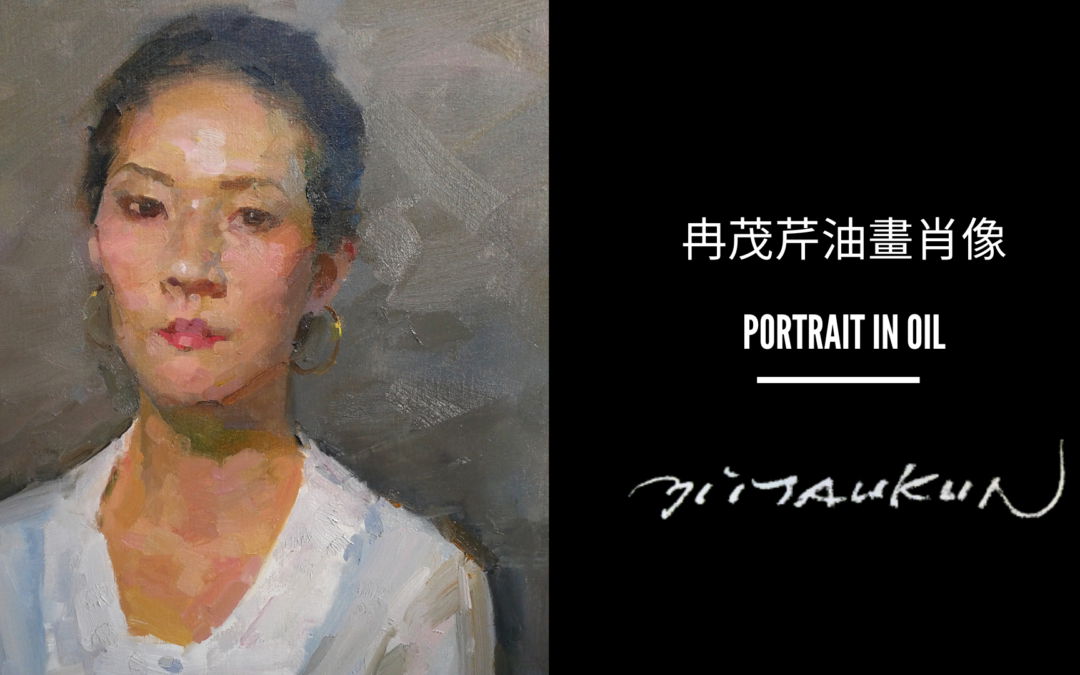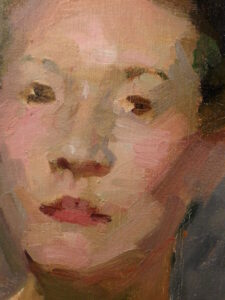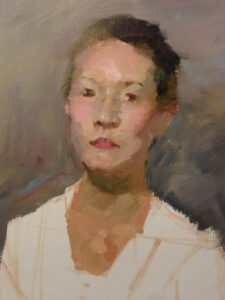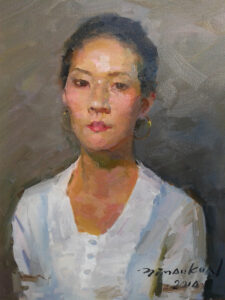Whether you’re a seasoned artist or just beginning your journey into oil painting, this course will guide you through the essential techniques to elevate your portrait painting skills. Let’s explore some of the key concepts and techniques Mr. Yim emphasizes in his teaching.
- The Connection Between Drawing and Oil Painting
Before diving into the world of oil painting, Mr. Yim emphasizes that solid drawing skills are essential. Drawing provides the foundation for proportions, structure, and likeness—elements that are crucial to a successful portrait. Mr. Yim teaches that once you have mastered drawing, you can shift your focus in oil painting to the language of color. With proportions and likeness already established, you can explore how colors interact, how light affects the subject, and how to convey emotion through your use of paint.
“Oil painting is a language of color,” Mr. Yim says. “But without a strong drawing foundation, you will struggle to express that language effectively.”
- Early Layers: Focus on Color Block Relationships
One of the key lessons in Mr. Yim’s oil painting technique is to start by focusing on color block relationships rather than jumping into details. In the early stages of the painting, the goal is to establish the overall harmony of the portrait by placing broad areas of light and shadow. This step allows you to build a solid foundation that guides the rest of the painting process.
By concentrating on the relationships between these blocks of color, you can create a unified and balanced composition. Mr. Yim teaches that details come later—once the major color relationships are in place, the details will fall naturally into the portrait.
- Methodical Palette Organization and Color Mixing
Another vital part of Mr. Yim’s process is organizing your palette methodically. In his philosophy, an organized palette prevents colors from becoming muddy or dirty and ensures that your colors remain vibrant throughout the painting. By keeping similar colors close together and cleaning your palette regularly, you maintain control over the color harmony of the painting.
Mr. Yim also teaches that each color should be mixed for every stroke. Rather than mixing large amounts of paint in advance, he encourages students to mix the precise colors they need for each area as they go. This approach allows for subtle variations in tone and hue, making the portrait more lifelike and dynamic.
- Customizing Flesh Tones: No Pre-Mixed Colors
A common pitfall for many artists is relying on pre-made flesh tones. Mr. Yim discourages this, emphasizing that every portrait is unique, and the flesh tones must be custom-mixed based on the lighting, environment, and the individual features of the subject. By observing the subtle color variations in skin tones and mixing your own palette, you create more realistic and expressive portraits.
Through his course, Mr. Yim provides practical guidance on how to mix your own flesh tones using a combination of ochres, reds, browns, and greens, always adjusted to suit the specific portrait you are working on.
- Brushwork: Varying Texture and Expression
Brushwork is not just about applying paint—it’s about creating texture, movement, and life within the portrait. Mr. Yim encourages students to explore different brushstrokes, using softer strokes for skin and more directional strokes for hair or fabric. This variation in brushwork brings energy and texture to the painting, making it more engaging and expressive.
One of Mr. Yim’s core teachings is knowing when to stop. Overworking the painting can smooth out expressive brushstrokes and leave the portrait looking flat. His philosophy is that retaining visible brushstrokes adds character and vitality to the final piece.
- The Final Touches: Light Values and Highlights
In the later stages of the painting, Mr. Yim advises students to focus on adding light values and highlights sparingly. These final touches bring the portrait to life by enhancing the depth and contrast. However, he warns against adding light too early in the process, as it can cause the painting to lose its vibrancy.
By carefully placing highlights and refining the light values, you can draw attention to the most important areas of the portrait, such as the eyes or the contours of the face.
Unlock Your Full Potential in Oil Portrait Painting
If you’re ready to take your oil portrait skills to the next level, Mr. Yim’s Portrait Oil Painting Video Course is the perfect opportunity to learn from a true master. With hours of in-depth instruction, you will gain valuable insights into every step of the oil painting process—from drawing preparation to color mixing, brushwork, and final details.
In this course, you will:
- Learn to transition seamlessly from drawing to oil painting
- Master the use of color block relationships in early layers to build a solid foundation
- Discover the art of customizing flesh tones based on observation, rather than relying on pre-mixed colors
- Explore expressive brushwork techniques that bring texture and life to your portraits
- Understand how to organize your palette and mix colors methodically to maintain vibrancy
Don’t miss this opportunity to transform your portrait painting practice with expert guidance from Mr. Yim Mau-Kun. Whether you’re just starting out or looking to refine your existing skills, this course will help you unlock your potential as an oil portrait artist.
Ready to Get Started?
Click [here] to explore the full course and gain access to exclusive video lessons today!









